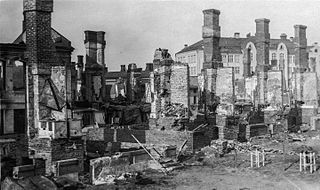 W
WThe Finnish Civil War was a civil war in Finland in 1918 fought for the leadership and control of Finland between White Finland and Finnish Socialist Workers' Republic during the country's transition from a Grand Duchy of the Russian Empire to an independent state. The clashes took place in the context of the national, political, and social turmoil caused by World War I in Europe. The war was fought between the Reds, led by a section of the Social Democratic Party, and the Whites, conducted by the conservative-based Senate and the German Imperial Army. The paramilitary Red Guards, composed of industrial and agrarian workers, controlled the cities and industrial centres of southern Finland. The paramilitary White Guards, composed of farmers, along with middle-class and upper-class social strata, controlled rural central and northern Finland led by General C. G. E. Mannerheim.
 W
WThe Finnish 27th Jäger Battalion was an elite light infantry unit in the German Army from 1915–1918 which consisted mainly of volunteers of the Finnish Jäger troops.
 W
WThe Baltic Sea Division was a 10,000 man German military unit commanded by Rüdiger von der Goltz. The core of the division comprised two army brigades from the German Eastern Front: 95. Reserve Infantry Brigade and 2. Guards Cavalry Brigade. They were supported by additional artillery and pioneer troops, and transported to Finland by a naval squadron led by Hugo Meurer.
 W
WThe Battle of Hyvinkää was fought during the Finnish Civil War on 19-21 April 1918, when troops from the German Baltic Sea Division marching from Helsinki conquered the locality from the Reds who had held it for three months. The Germans attacked Hyvinkää from three different directions; from the direction of Klaukkala and Nurmijärvi via the Hanko railway line and along the Tuusula highway and main line. The main defense positions of the Reds were along the Hanko track in Hyvinkäänkylä, after which fierce battles took place in the station area. After the well-taken invasion, a bloody follow-up began, with whites executing about 150 red or suspects during May.
 W
WThe Border is a 2007 Finnish-Russian war drama film directed by Lauri Törhönen. Set in the spring of 1918, right after the Finnish Civil War, the film is about a Finnish officer who is sent to the village of Rajajoki to form a border between Finland and Soviet Russia.
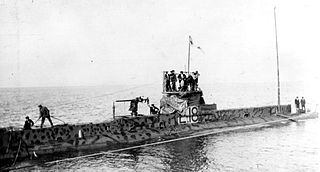 W
WA British submarine flotilla operated in the Baltic Sea for three years during the First World War. The squadron of nine submarines was attached to the Russian Baltic Fleet. The main task of the flotilla was to prevent the import of iron ore from Sweden to Imperial Germany. The success of the flotilla also forced the German Navy in the Baltic to keep to their bases and denied the German High Seas Fleet a training ground. The flotilla was based in Reval (Tallinn), and for most of its career commanded by Captain Francis Cromie.
 W
WAll-female units of the paramilitary Red Guards served in the 1918 Finnish Civil War. The first Women's Guards units formed in early February in the main Finnish cities. More than 15 female Guards units were established by the end of March 1918, with a total of about 2,000 women serving. The female Guards units consisted of young industrial workers, maids, and servants. Their average age was about 20, but some were as young as 14. The women served in auxiliary units and in combat.
 W
WFinnish Civil War prison camps were operated by the White side of the 1918 Finnish Civil War. They were composed of 13 main camps, mostly active from the April–May 1918, and more than 60 smaller POW camps at the final period of the war. Number of captured Red Guard members and associates was approximately 80,000 including 4,700 women and 1,500 children. A total of 12,000–14,000 prisoners died in captivity. Camps and their hopeless conditions effected in the minds of many people much deeper than the bloody war itself, although the camps were totally ignored for decades by the White interpretation of the Civil War history.
 W
WThe Finnish People's Delegation was a governmental body, created by a group of members in the Social Democratic Party of Finland (SDP), to serve as the Government of the Red Guards during the Finnish Civil War. The chair of the Delegation was the former Speaker of the Parliament Kullervo Manner.
 W
WThe Finnish Socialist Workers' Republic (FSWR), more commonly referred to as Red Finland, was a theoretical precursor of a Finnish socialist state. It was outlined during the Finnish Civil War, on 29 January 1918 by the Finnish People's Delegation, the Reds and Red Guards of the Finnish Social Democratic Party, after the socialist revolution in Finland on 26 January 1918. Its sole prime minister was Kullervo Manner, chairman of the central committee.
 W
WThe Battle of Helsinki was a 1918 Finnish Civil War battle, fought in 12–13 April between the German troops and Finnish Whites against the Finnish Reds in Helsinki, Finland. Together with the battles of Tampere and Vyborg, it was one of the three major urban battles of the Finnish Civil War. The Germans invaded Helsinki despite the opposition of Finnish White Army leader Carl Gustaf Emil Mannerheim who wanted to attack the capital city with his own troops after Tampere had fallen on 6 April. However, the Germans had their own interest in taking Helsinki as quickly as possible and then moving further east towards the Russian border. The city had been under Red control for 11 weeks since the beginning of the war.
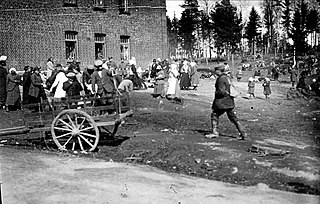 W
WHennala camp was a concentration camp operating from the beginning of May 1918 to 15 September 1918 in the Hennala Garrison in Lahti, Finland. It was set up for the Reds captured by the White Army after the Finnish Civil War Battle of Lahti.
 W
WThe Jäger Movement consisted of volunteers from Finland who trained in Germany as Jägers during World War I. Supported by Germany to enable the creation of a Finnish sovereign state, the movement was one of many means by which Germany intended to weaken Russia and to cause Russia's loss of its western provinces and dependencies.
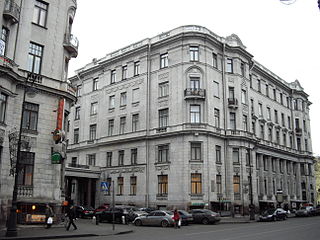 W
WThe Kuusinen Club Incident was the murder of eight members of the Finnish Communist Party in the Kuusinen Club, on 31 August 1920.
 W
WThe Red Guards were the paramilitary units of the Finnish labour movement in the early 1900s. The first Red Guards were established during the 1905 general strike, but disbanded a year later. After the Russian 1917 February revolution the Red Guards were re-established and in the 1918 Finnish Civil War they formed the army of Red Finland. The combined strength of the Red Guard was about 30,000 at the beginning of the Civil War, peaking at between 90,000 and 120,000 during the course of the conflict. The number included more than 2,000 members of the Women's Guards. In May 1918, up to 80,000 Reds were captured by the victorious Whites, 12,000 to 14,000 of them died in the prison camps due to execution, disease and malnutrition. A majority of the Reds were finally pardoned in late 1918.
 W
WRiihimäki prison camp was a prison camp operating in the area of the Riihimäki garrison after the Finnish Civil War in 1918. It held, at most, around 8 500 red guards. According to the war victims of Finland -database, a total of 981 prisoners died in camp, in result of executions, hunger and disease. The camp was closed down in October 1918, and the forced labour facility replacing it was shut down in the spring of 1921. The memorial of the prison camp is located in the Tienhaara part of Riihimäki.
 W
WThe Battle of Ruovesi was a major battle during the Finnish Civil War and on the Eastern Front of World War I fought in Ruovesi, Finland from 5 February to 19 March 1918 between the Whites and the Reds with support from Russian volunteers.
 W
WThe Swedish Brigade was a paramilitary unit composed of 400 Swedish volunteers to assist the White Guards during the 1918 Finnish Civil War. The brigade participated in the Battle of Tampere between 28 March and 6 April. 34 members of the Swedish Brigade were killed in action and up to 50 wounded. Notable members included the archaeologist Axel Boëthius and the historian Olof Palme who was killed in Tampere.
 W
WBattle of Syrjäntaka was a 1918 Finnish Civil War battle fought 28–29 April in Syrjäntaka, Tuulos, between the German Baltic Sea Division and the Finnish Red Guards. Thousands of Red refugees were fleeing east, while they were blocked by a small unit of Germans in a highway crossing in the small village of Syrjäntaka. After hours of desperate fighting, the Reds managed to break through and continue their journey. Battle of Syrjäntaka and the preceding battle in Hauho were the only battles the Germans lost during their one-month military campaign in Finland. They were also the last Red victories of the Civil War. The battle itself was totally unnecessary. It had no effect to the result of the war and either side gained nothing as the Reds were captured only a couple of days later.
 W
WThe Tammisaari camp was a concentration camp and prison in Dragsvik, Ekenäs in Finland. It was set for the Reds captured by the Whites in the 1918 Finnish Civil War. The concentration camp operated from May 1918 to 15 September 1918 when the majority of the captured Reds were released on parole. Tammisaari camp was then turned into a forced labour camp for convicted Reds and later in the early 1920s into a facility for political prisoners. Tammisaari camp was known as the most notorious of all Finnish Civil War prison camps. Between May and September 1918 nearly 3,000 of the 8,700 prisoners died of executions, disease or malnutrition.
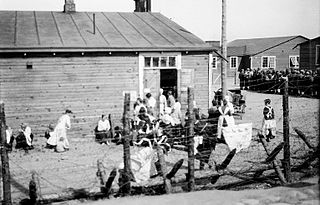 W
WTampere camp was a concentration camp operating from 6 April 1918 to 15 September 1918 in the Kaleva district of Tampere, Finland. It was set up for the Reds captured by the White Army after the Finnish Civil War Battle of Tampere.
 W
WThe Valkoisten Voitonparaati was a military parade of the Finnish White Guard on 16 May 1918 celebrating their decisive victory in the Finnish Civil War, which officially ended the day before. The parade took place in Helsinki, the capital of Finland. The parade was presided by General Carl Gustaf Emil Mannerheim, the then Commander-in-Chief of the Finnish Defense Forces, a position he would resign from 14 days later. It consisted of 12,000 men marching down the streets of the capital. It is regarded today as a political show of force organized by Mannerheim to strengthen his position vis-à-vis the German troops in the country. The parade played an important role in Mannerheim's later career, as a result of which he became nationally known to the point of becoming the 6th President of Finland in the mid-1940s. The whites also organized victory parades in other cities they had occupied during the war. Large parades were also held in Vaasa and Vyborg, both of which Mannerheim attended.
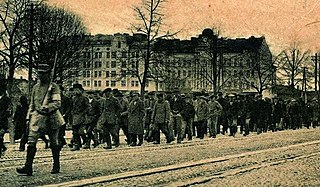 W
WThe Battle of Vyborg was a 1918 Finnish Civil War battle, fought 24–29 April between the Finnish Whites against the Finnish Reds in Vyborg. Together with the Battle of Tampere and Battle of Helsinki, it was one of the three major urban battles of the Finnish Civil War. The battle is also remembered because of its bloody aftermath, as the Whites executed up to 400 non-aligned military personnel and civilians of Russian and associated ethnicities in an effort to kill all of the suspected Red Guards.
 W
WThe Vyborg massacre was the killing of approximately 360-420 Russians in the town of Vyborg during the Finnish Civil War in April–May 1918. The massacre took place during and after the Battle of Vyborg as the White Guards captured the town from the Red Guards. At least half of the victims were Russian soldiers and military personnel. The slain were mainly men and young boys: nine out of ten were men fit for military service. The White Guards were "cleansing" the city of Red Guards, however, only a small minority of the killed Russian townsfolk were affiliated with the Finnish labour movement.
 W
WThe White Guard or Civil Guard was a voluntary militia that emerged victorious over the socialist Red Guards as a part of the Whites in the Finnish Civil War of 1918. They were generally known as the White Guard in the West due to their opposition to the communist Red Guards. In the White Army of Finland many participants were recruits, draftees and German-trained Jägers and not part of the paramilitary. The central organization was named the White Guard Organization, and the organization consisted of local chapters in municipalities.
 W
WThe Whites, or White Finland, was the name used to refer to the refugee government and forces under Pehr Evind Svinhufvud's first senate who opposed the "Reds", or the Finnish Socialist Workers' Republic, during the Finnish civil war (1918).